One of the primary reasons concrete is a popular material for constructing floors is that it is durable and low maintenance. Typically, it is the material of choice for driveways, patios, and other exterior floors or surfaces. However, even inside the house it can be used to construct floors because removing stains and blotches off concrete floors is far easier.
In addition, depending on the type of concrete floor sealer you apply, the dull, grey nature appearance of cement flooring can be transformed into something more pleasing to the eye, especially when you know how to clean concrete flooring.
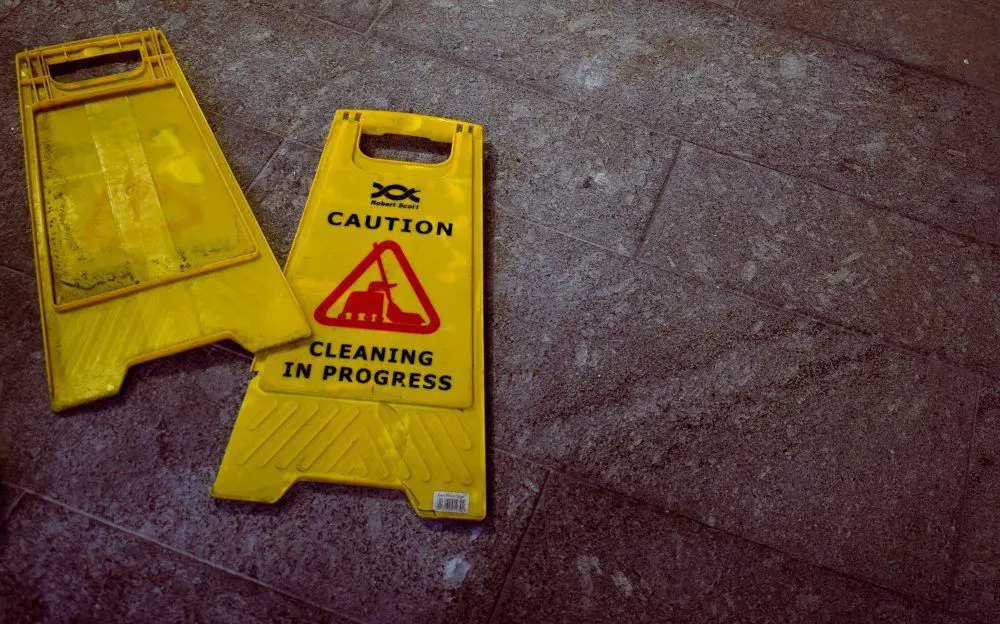
Despite its durable nature, concrete floors still need further protection. Floor sealers protect concrete from exposure to moisture and thereby prolong its lifespan. Good quality floor sealers last for at least a couple of years, after which you will have to apply a new coating of sealer. However, just because you have a sealed concrete floor does not mean that cleaning is no longer necessary.
Although it obviously do not require the same degree of attention that a hardwood floor or a marble floor would, but nonetheless, concrete floor cleaning is still required from time to time to maintain its good condition.
Table of Contents
Indoor vs Outdoor
The method of cleaning cement floors, such as a concrete patio or driveway, will differ from the method used to clean indoor concrete floors that have been stamped or polished. Indoor concrete flooring need to be tackled a little more gently than outdoor concrete flooring. Plus, stains on indoor concrete floors should be dealt with as soon as possible, because while concrete is fairly stain resistant, its porous nature means that it does soak up a certain amount of spills and dirt.
How to Clean Outdoor Concrete Floors
You can use a power washer or a pressure washer to clean outdoor concrete floors. If you do not have the budget to acquire these machines, you do not need to worry. You do not necessarily need to buy one of these because they are also available for rent. The instructions on how to use it are also provided with the machine.
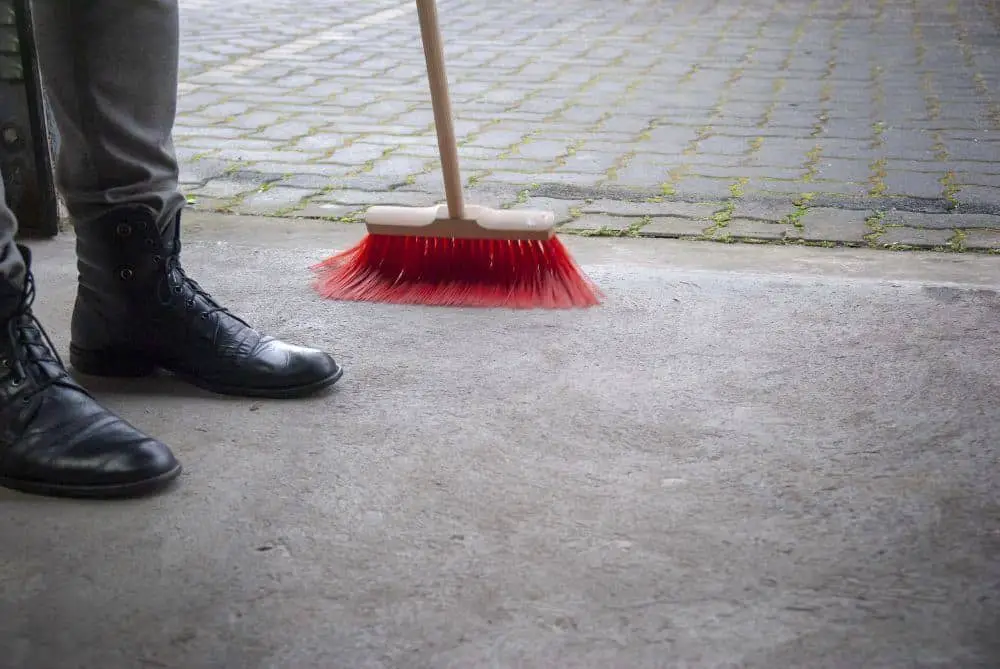
If you want to know how to clean your concrete floors, you begin by spraying the driveway, patio, or any other external concrete surface with cleaning detergent. Use a nylon brush or any other brush with stiff bristles to scrub the detergent thoroughly.
Remember not to use a brush with metal bristles as it might scratch the surface and the metal fibers may also remove the layer of sealant in some parts of the floor. Once the floor has been scrubbed properly, turn on the power washer and move the wand from side-to-side, just like you would when you are using a mop.
When it comes to cleaning concrete flooring, make sure that you are wearing safety glasses and a pair of sturdy gloves before you start cleaning.
Follow this routine once every month or as needed in maintaining a clean driveway or patio. However, you need to put in some extra effort to clean any stains on the floors. Bleach and ammonia are the most common chemicals used in a concrete floor cleaner for outdoor flooring.
You can also use trisodium phosphate (TSP) to clean and get rid of stains. You will have to mix it with water and scrub the floor with it to remove stains. Once again, a brush with nylon bristles is the best option.
After thoroughly scrubbing the stained areas in your concrete flooring, you can use a hose to clean up the floor. The other alternative you have when it comes to how to clean concrete flooring is muriatic acid. This, however, is generally used for the particularly obstinate stains such as rust and dried up grout.
Irrespective of which product you use to clean stains, do not forget to wear protective eyewear, clothing, and gloves – especially when you are handling chemicals to clean your concrete flooring.
How to Clean Indoor Concrete Floors
As mentioned earlier, indoor concrete floors will require gentler cleaning.

Dry Dust Cleaning
If you want to clean indoor concrete flooring, you will need to sweep the floor or better still, vacuum it thoroughly on a regular basis. The frequency with which you do this will depend on the amount of foot traffic the flooring receives.
You will also have to take into consideration the presence and number of pets and children in the house. So, if the floor in question receives heavy foot traffic and you have pets at home, the dry dusting and cleaning needs to be done daily. Whereas if the foot traffic is moderate and there are no pets at home, you can restrict the dry dusting and cleaning to once or twice a week.
Use a microfiber mop or brush to dry clean the floor. It creates static electricity, which efficiently pulls dust and debris off the floor and does not just push the dust or debris around. This ensures that the flooring is clean in a thorough manner.
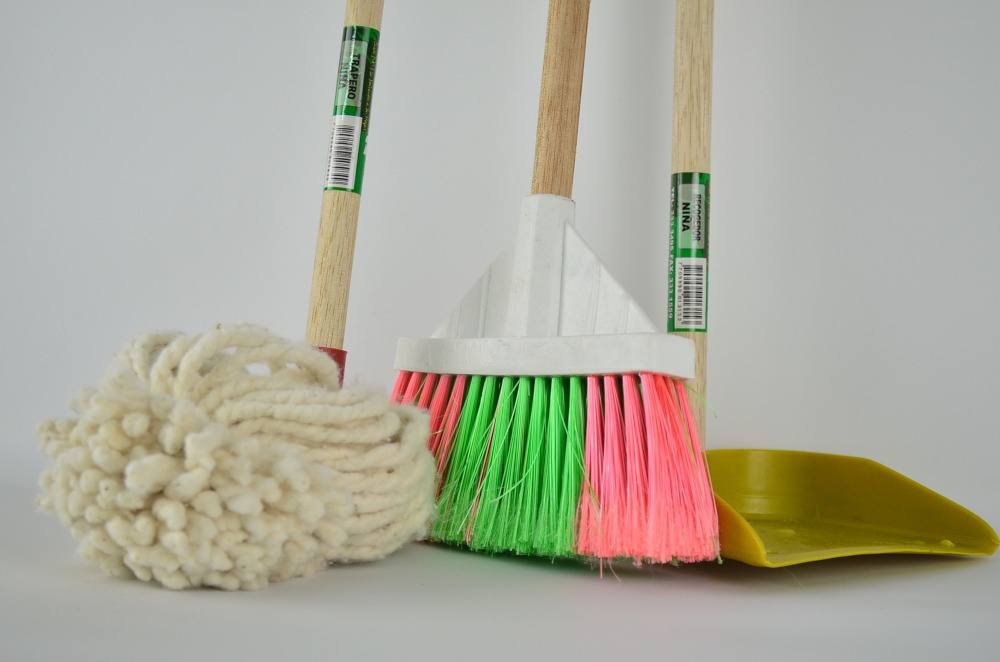
Wet Mopping
Once a month, you need to mop the floor along with vacuuming it.
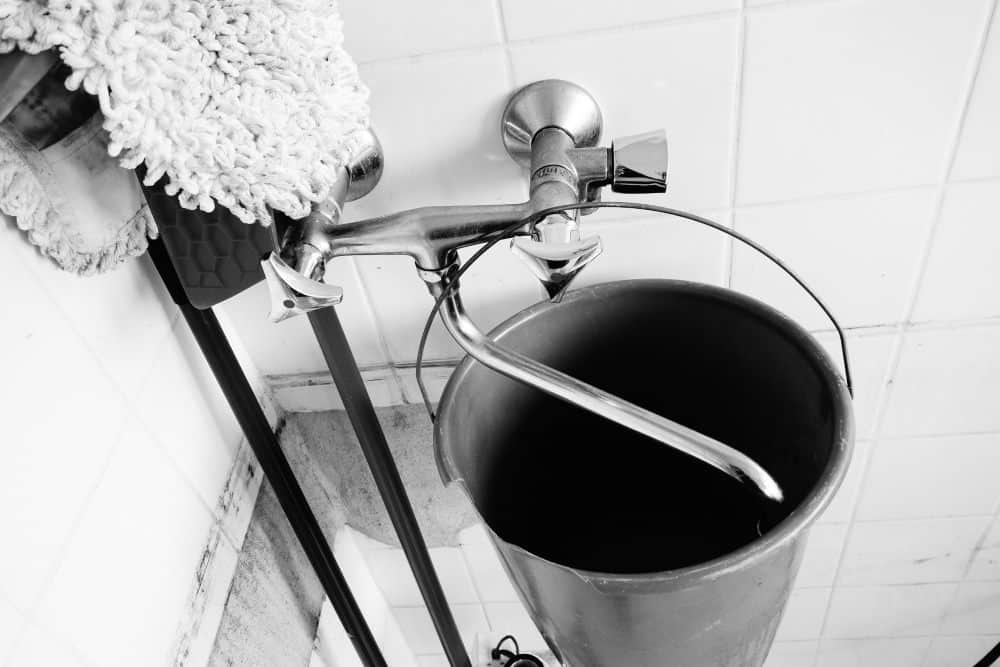
Tackle Stains
In addition to this, you need to take care of stains and spills immediately or as soon as you notice them in your flooring. One of the easiest ways to take care of stains on indoor concrete floors is to create a thick paste with flour and hydrogen peroxide.
Apply this paste over the stained area of the floor and let it rest for a few hours (ideally overnight). Later, scrape up the dried up layer and vacuum any remaining debris. The process of cleaning the floor mentioned above should be carried out after taking care of the stain.
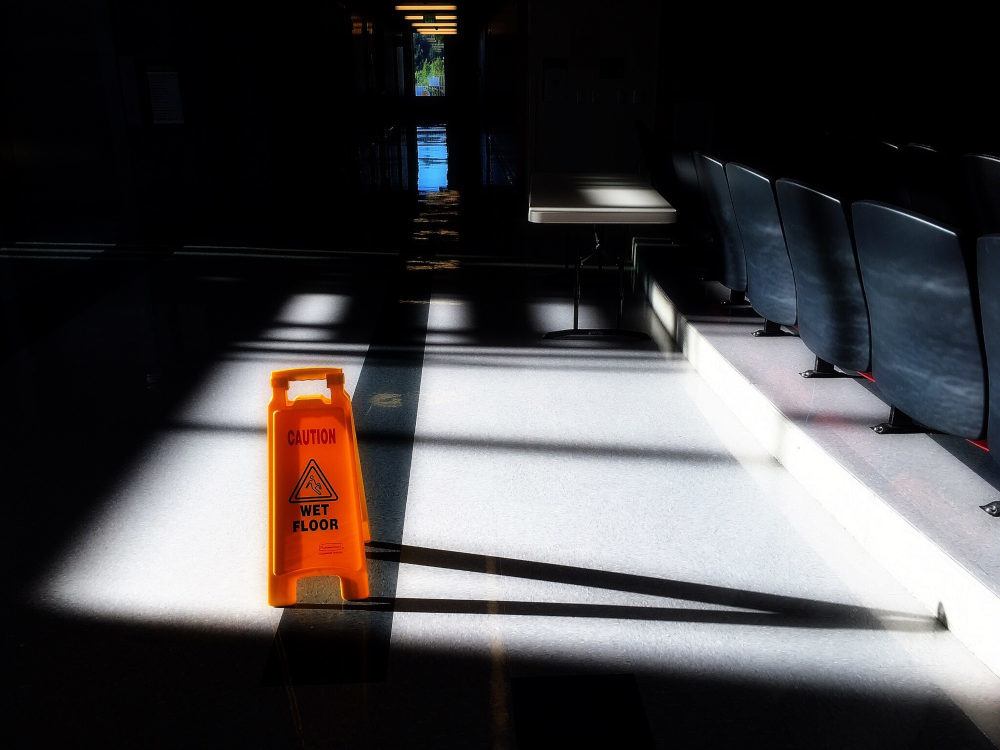
Last Word on Concrete Sealers
An important part of the process of cleaning sealed concrete floors is to keep an eye on the level of wear and tear of the layer of sealant itself. A number of manufacturers claim that a new coating of sealant needs to be applied every year. However, that is more a marketing tactic than a rule of thumb.
When you need to apply a fresh coat of sealer will depend on several factors, including the weather conditions in your area for outdoor floors. Also, if the wear and tear is restricted to a small area, you can simply patch that up instead of applying a fresh coat of concrete sealer to the entire floor.

Here are a few quick notes about the various types of concrete sealers and the things you need to know about them in order to ensure they last long.

Conclusion
As with any other type of floor, regular care and maintenance is the key to ensuring that your flooring remains clean and last for a long period of time. Also, for concrete floors, you should consider a wax finish to top the sealer used to coat your concrete floor because that provides extra protection and longevity.
